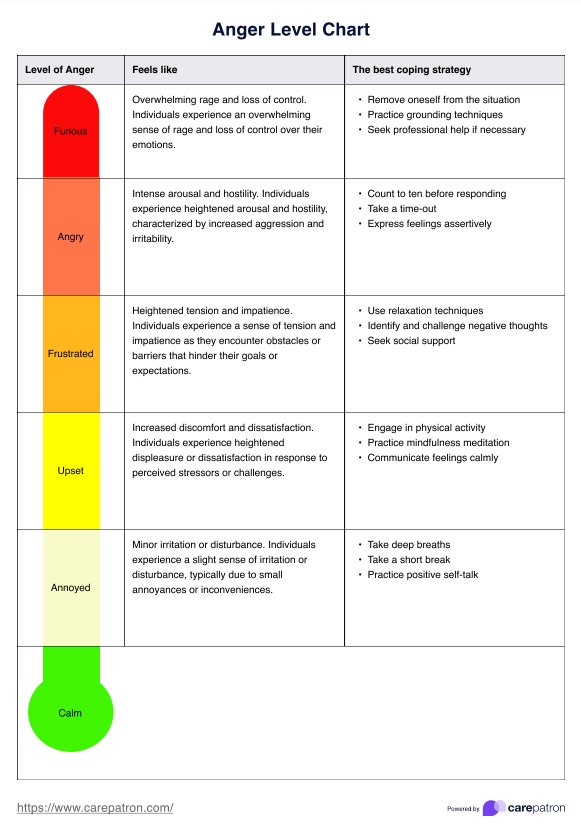Yes, anger exists on a spectrum, ranging from mild irritation to intense fury. The Anger Level Chart illustrates these levels, helping individuals and healthcare professionals identify emotional states and tailor management strategies accordingly.

Anger Level Chart
Learn about anger management, its importance, and how to help clients address anger issues effectively with our Anger Level Chart.
Anger Level Chart Template
Commonly asked questions
The highest form of anger is fury or rage. This state involves overwhelming emotions, a loss of control, and impulsive behavior, which can lead to harm if not addressed effectively.
The five stages of anger as outlined in the Anger Level Chart include annoyed, upset, frustrated, angry, and furious. Each stage represents an escalating level of emotional intensity, helping individuals recognize and manage their feelings before reaching a critical point.
EHR and practice management software
Get started for free
*No credit card required
Free
$0/usd
Unlimited clients
Telehealth
1GB of storage
Client portal text
Automated billing and online payments











